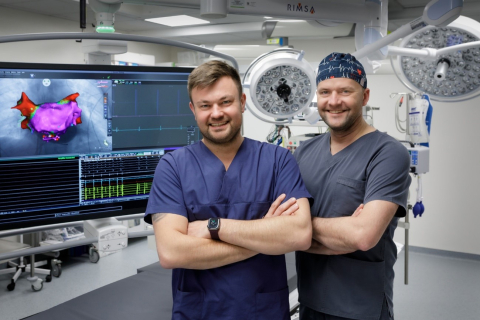Arrhythmias that occur in athletes are primarily related to the presence of the so-called accessory pathway, most often undetected in the process of qualifying for sports. The accessory pathway, which is an additional electrical connection between two parts of the heart, is life-threatening in certain situations. It can occur especially in athletes, but also in workers in high-risk professions such as airplane pilots and professional drivers. This means that the defect can become a source of danger not only for the sports people. In the case of an athlete, even if the accessory pathway is not very functional, it is still an indication to remove it, explains Dr. Piotr Lodzinski.
Athletes at risk
Athletes, who are exposed to tremendous stress on the body and high heart rates, have a much higher risk of arrhythmias. This can lead to dramatic situations, collapses, and even deaths during sporting events. - Playing sports, especially professional sports, by people with an accessory pathway is dangerous because atrial fibrillation, which is the most common type of arrhythmia, can cause the heart to beat very rapidly, as fast as 300-400 beats per minute. This can lead to cardiac arrest. Just think back to the recent European Football Championship and the footballer who had a heart attack during the game. Admittedly, in this case the reason for the arrest was a different type of arrhythmia, but this situation shows one regularity: if a person who practices sports has an underlying arrhythmia, i.e. an accessory pathway that had not been detected before, the physical effort is conducive to the appearance of arrhythmia - says Paweł Balsam, MD, PhD.
Congenital or acquired disease
The source of the arrhythmia can vary. Doctors distinguish between both an innate predisposition to arrhythmias, i.e. accessory pathways that occur regardless of sporting activity, and arrhythmias that arise as a result of the heart's adaptation to exercise, which from a certain level causes cardiac remodeling that promotes arrhythmias. Over time, endurance sports can lead to the phenomenon of the so-called athlete's heart. If you have a congenital defect, the risk of arrhythmia will or may occur whether you play sports or not.
A safe minimally invasive procedure
Ablation is a procedure that eliminates the heart structure responsible for triggering or sustaining an arrhythmia by destroying the part of the heart muscle that is responsible for the arrhythmia. It is a safe procedure and guarantees a return to physical fitness.
- It's a method commonly used today. Currently, we have achieved such a high level of safety in the surgeries for arrhythmias that complications are very rare, and if they do occur, they are negligible for the patient. These are minimally invasive procedures performed via vascular access without opening the chest. After such a procedure the patient can return home on the same day or the next day, and after two weeks - to physical activity - says Dr. Piotr Lodzinski.
Surgery on a beating heart
When performing an ablation procedure, professionals must consider both the effectiveness of the procedure and patient safety. This sometimes results in two treatments being required to effectively remove the source of the arrhythmia.
- Removing tissues is a bit like the work of a sapper. We operate on a beating heart. Therefore, if the structures we want to save are in close proximity to the site we need to damage, our level of interference is much lower. In such a situation, we decide that it is preferable – subject, of course, to recurrence of the arrhythmia- for the patient to undergo another procedure rather than the danger of cutting too much of the heart muscle structure. If this happened in the case of an athlete, it would result in a pacemaker implantation, which closes the way to professional sports practice," says Dr. Piotr Lodzinski.
The wrestler, Tadeusz Michalik, after the second ablation had the accessory pathway successfully removed and was allowed to practice professional sports.
Prepared by Iwona Kołakowska, based on press releases from the Spokesperson’s Office of the MUW
